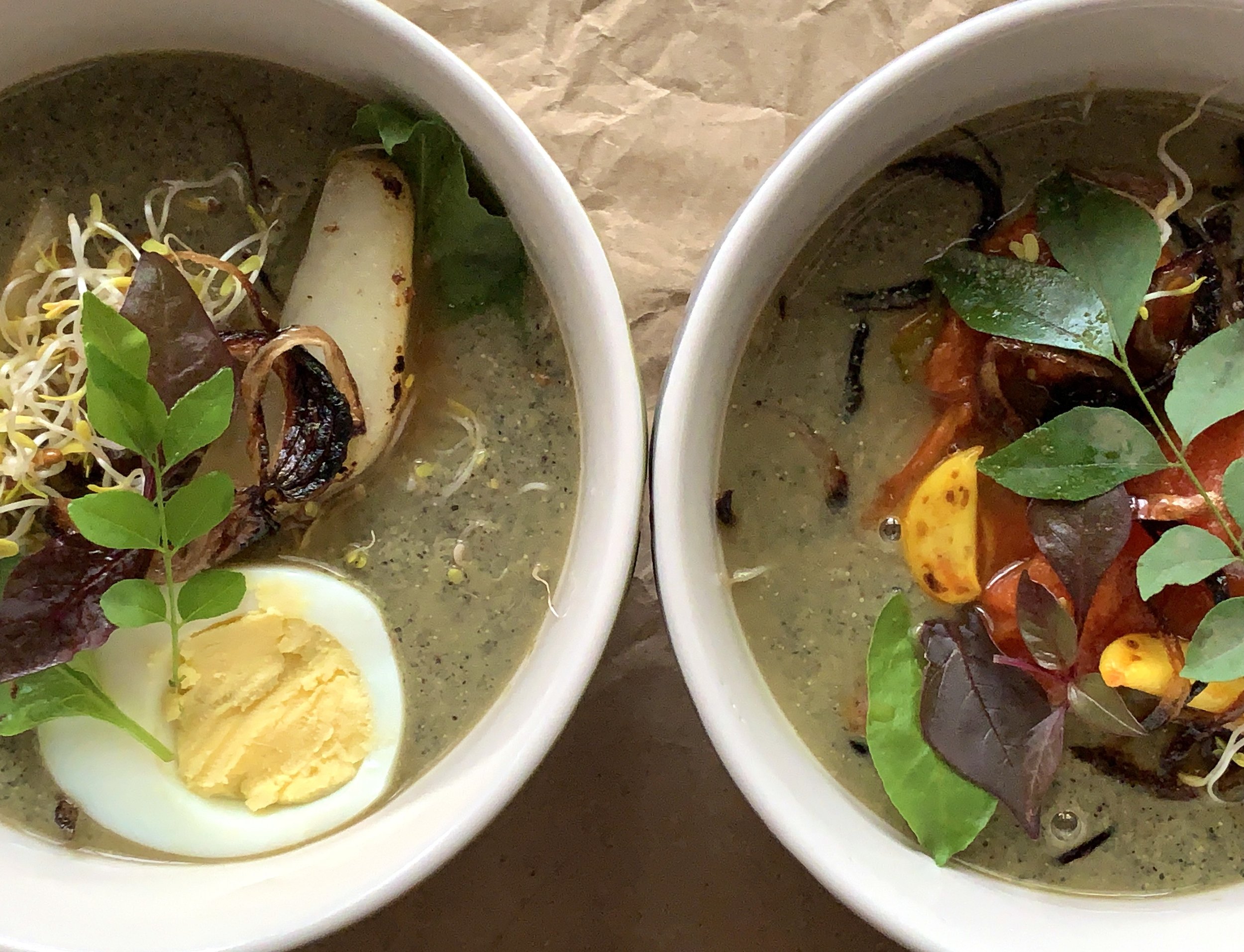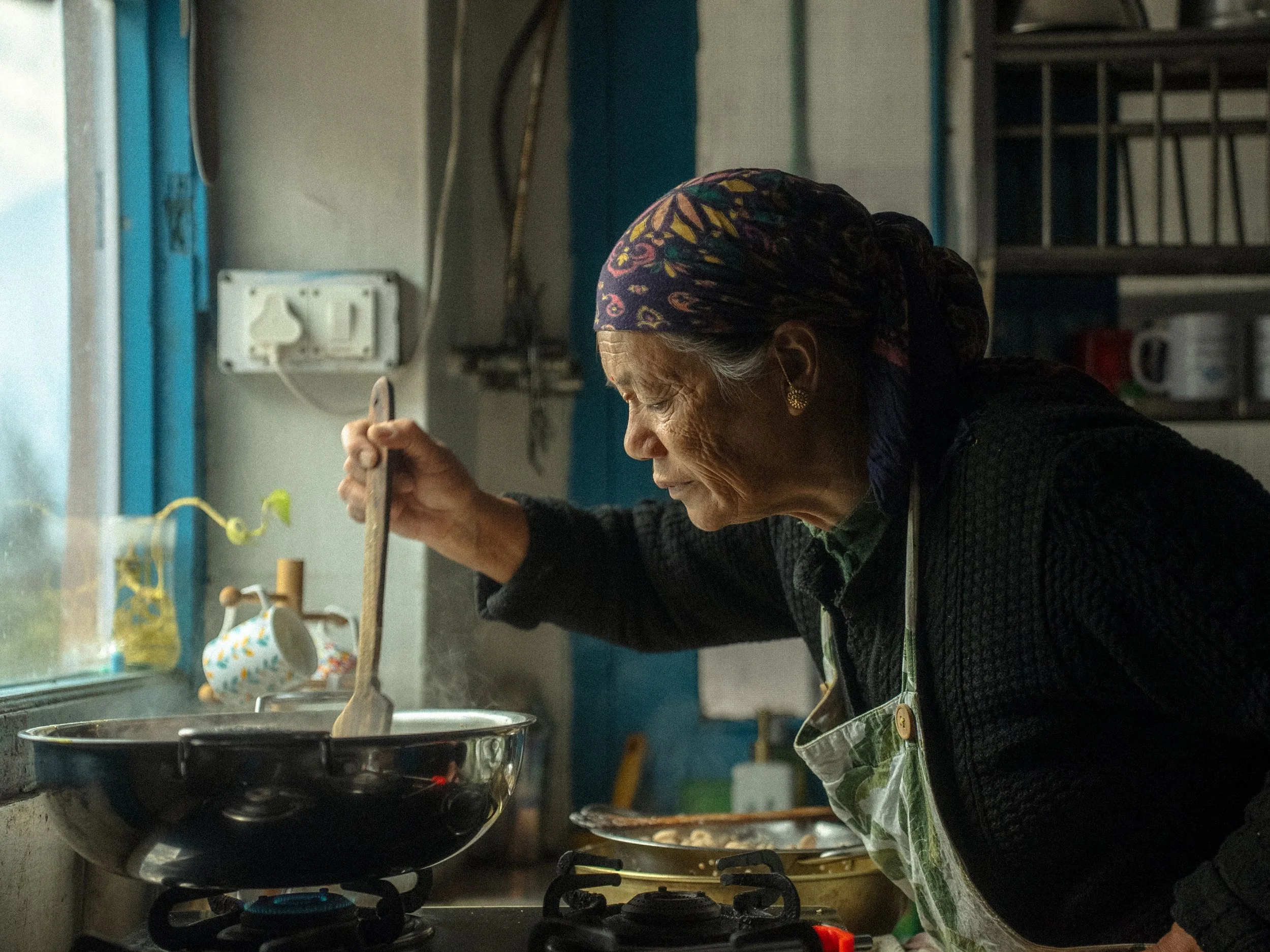Reconnecting With Horse Gram in the Modern Kitchen

Historically, horse gram has been a misunderstood ingredient, and cooking with it, labour-intensive. Industrialisation has brought about horse gram flour, making this ingredient more accessible in ways it has not been in the past.
In 1952, 35 miles from Nairobi, Kenya, a plant was observed, collected, and preserved. The specimen was then added to the growing body of literature that called it Dolichos biflorus, or the African cowpea, beginning with Joseph Dalton Hooker’s Flora of British India in 1879. Until the end of the 20th century, this plant continued to be misidentified, when researchers realised that it wasn’t African at all; it was an indigenous Indian plant, making an appearance in the Savannahs of Africa. Eventually, it was accurately recognised as horse gram, or Macrotyloma uniflorum, and it was decided that archeological documentation describing it as Dolichos biflorus should be read to describe its new name.
A story like this begs the question, how did an error like this span across such an extended period of time before it was caught and corrected? Perhaps it was a clerical mistake, or one caused by linguistic barriers, but maybe there’s more to it. Historically, horsegram has been obscured by a veil of culinary biases; it’s been labeled as ‘the food of the poor’, and as nutritionally substandard because of the anti-nutrients it contains. It’s not unlikely that the prejudices against it caused it to be so overlooked that it was nearly forgotten, allowing it to be conflated with cowpea for as long as it was.
Benefits of Horse gram
The myths against horse gram may have been busted, but as is generally the case with biases, their effects are persistent. Horse gram is an incredibly hardy crop, shockingly so — it can even grow on the notoriously suppressive soils of eucalyptus forests. As a legume, it enriches the soil it grows on rather than draining it, which makes it a huge asset to farmers in improving their soil’s health. It can also be grown along with other taller crops — on the same farmland at the same time — and requires minimal attention from farmers. Despite its long list of merits, horse gram is now considered to be an orphan legume — one that is drastically under-utilised — that subsequently has enormous potential as food for the future.
While it’s true that horse gram offers a plateful of benefits, its typical preparations involve elaborate, arduous processes. Most traditional Indian dishes use the beans whole, which are cleaned by handpicking the grits, then soaked, boiled, blitzed to a paste, and cooked again before being eaten. Coupled with the invisible work of cleaning, cooking horse gram can take upwards of two days. Going by this, horse gram seems to be the quintessential slow food, and by extension of it, an embodiment of the slow Indian life, an appreciation of the labor of cooking. Sadly, time is a privilege, one that not many are afforded, making horse gram an unattainable and unrealistic aspect of Indian culinary tradition. Yet, a shortening of this process by the replacement of the whole bean with horse gram flour almost seems like a disturbance of identity — both of the food and of the people that do cook and consume it. When horse gram enters the household as flour, is it even recognisable? Is purchasing, cooking, and eating this flour the same as the spurning of our heritage? If we could taste the origin of food, and the emotions that produced it, would we be able to taste anything in the industrial package, or would it taste like it was made by nobody, in the middle of nowhere? Does using the flour and skipping the process only confirm social scientist Claude Fischler’s theory that modernity produces food that is ‘devoid of origin or history, with no respectable past,’ since with horse gram flour, more of the cooking process takes place in a factory rather than in the home, when compared with the bean?
These questions may seem complex to answer, but it seems to me that Fischler, as critical of modernity as he was, answered them himself when he wrote that ‘the question of identity only arises when identity is disturbed.’ He predicted that modernity in our food system would cause us to rethink our identity, perhaps hoping that, startled, we would then steer clear of change. From where I’m standing, horsegram flour could be the opportunity to reconnect with an indigenous Indian ingredient that has been overlooked for centuries; maybe Fischler was wrong, and modernity does just make cooking easier. Or maybe he was right, and we, as urban Indian food consumers, are so deep in the business of diluting our identity, of moving away from ancient Indian foods, that now, we are questioning our created identities and retracing our steps anyway. Either way, in traveling backwards in time, we may make compromises. We may choose horse gram flour over the whole bean, but in even this choice, there is empowerment over the homogenisation of our plates and palates alike.
Cooking with Horse Gram
This compromise — that the cleaning, soaking, grinding are all done for us — is a shortening of the process of cooking and eating horse gram. Some may see it as insincere; personally, I see it as an opportunity to meet our food halfway. Perhaps this is the paradox: a product of industrialisation moving us a step closer to sustainability in our food system. Take the flour. Embrace the cooking. Make it into a Dakhni Muslim kutt. Or the Garhwali phanu. Or add it to the Bengali gota sheddho. Or even just use it to make pakoras on a rainy day. Use the spices of your homeland, and flavour it to please your ancestors, if you feel like it. With more time on your hands, you can turn this into a comfort meal. It’s not laborious anymore; it doesn’t need to wait for the weekend, or for the trip back home. It can be what you reach for after a long day, one where you miss the flavours of home, and it can serve as a reminder of your connection to your people. Yes, the flour takes away a few steps from the cooking process, but that leaves you with more love and labor to pour into the steps you are left with. Appreciate them, enjoy them, savour them, and pour all that excess labor of love —for your people, for your land, for your food growers — into what you’re making, now that you have some to spare.
This recipe for horse gram soup is inspired by the Dakhni Muslim kutt, but it’s quicker, has a few more vegetables, and is really less of a recipe and more of an outline that I colour in, depending on the mood. I’m not going to abandon the tradition of kutt because of this, but I’m definitely going to be able to eat horse gram a little more often, using it as a base for leftover vegetables, mixing and matching spices and seasonings, thinking all the time about how this dish came to be. I hope you do too.
Recipe: Kutt-Inspired Horse Gram Soup
Ingredients
1 onion (medium diced into ½ inch cubes)
1 eggplant (large, largely diced into ¾ inch cubes)
1 potato (largely diced into ¾ inch cubes)
2 tomatoes (medium; medium diced into ½ inch cubes)
5 tbsp horse gram flour
½ cup of chopped garden greens of choice — spinach/cilantro/basil/kale/amaranth (optional)
1 tsp chilli flakes (use more or less to taste)
4-5 garlic pods
2-3 green chilies, slit lengthwise (or chilli flakes)
¼ tsp turmeric powder
½ tsp ginger paste (diluted in 1 tsp of water)
¼ tsp cumin seeds
10-12 curry leaves
⅛ tsp asafoetida
Juice of 1 lime
3 cup water (divided)
3 tbsp extra virgin olive oil (divided)
Salt, to taste
Method
Add 1 tbsp of the olive oil to a pan. To it, add some cumin. Once it begins to crackle, add the garlic pods. Sauté until they turn brown and fragrant.
To this, add the green chilies and onion cubes. Sauté until the onion is soft and translucent.
Next, add the turmeric.
Add the potato and allow it to sauté for a minute. Then, add the eggplant and sauté.
Add the tomato.
Season with salt and chilli flakes. Add 1 cup of water and allow the vegetables to cook until the potato is tender.
In a mixing bowl, add the horse gram flour and 2 cups of water. Mix to form an even, pourable consistency. Season with salt and the diluted ginger paste.
Once the vegetables are cooked, pour in the horse gram mixture and gently stir for about 3 minutes or until the consistency slightly thickens.
Turn off heat. Add boiled eggs or pre-cooked meatballs.
In a tempering spoon, add the remaining olive oil for the tadka. Add the curry leaves to this and allow it to crackle. Pour this over the soup.
Drizzle with lime juice. Stir in your greens of choice.
Pair with bread, rice or other carbs of choice, or eat as is. Serve warm or chilled.
Zoya is an aspiring food scholar, archiving her exploration of all things food and health on @kohl.lined.perspectives.
ALSO ON THE GOYA JOURNAL










